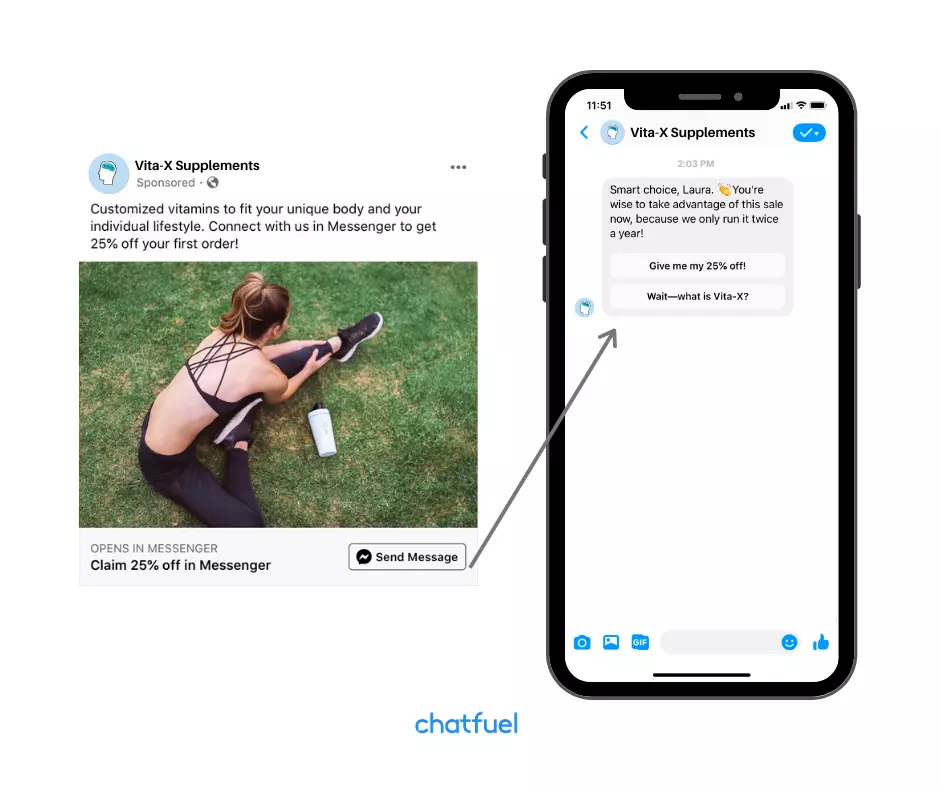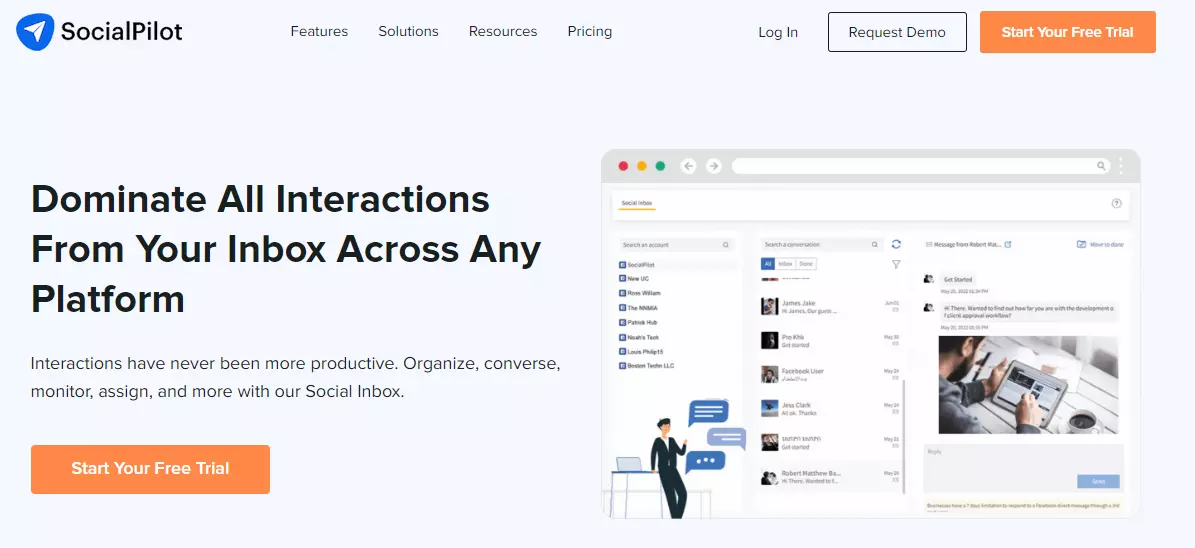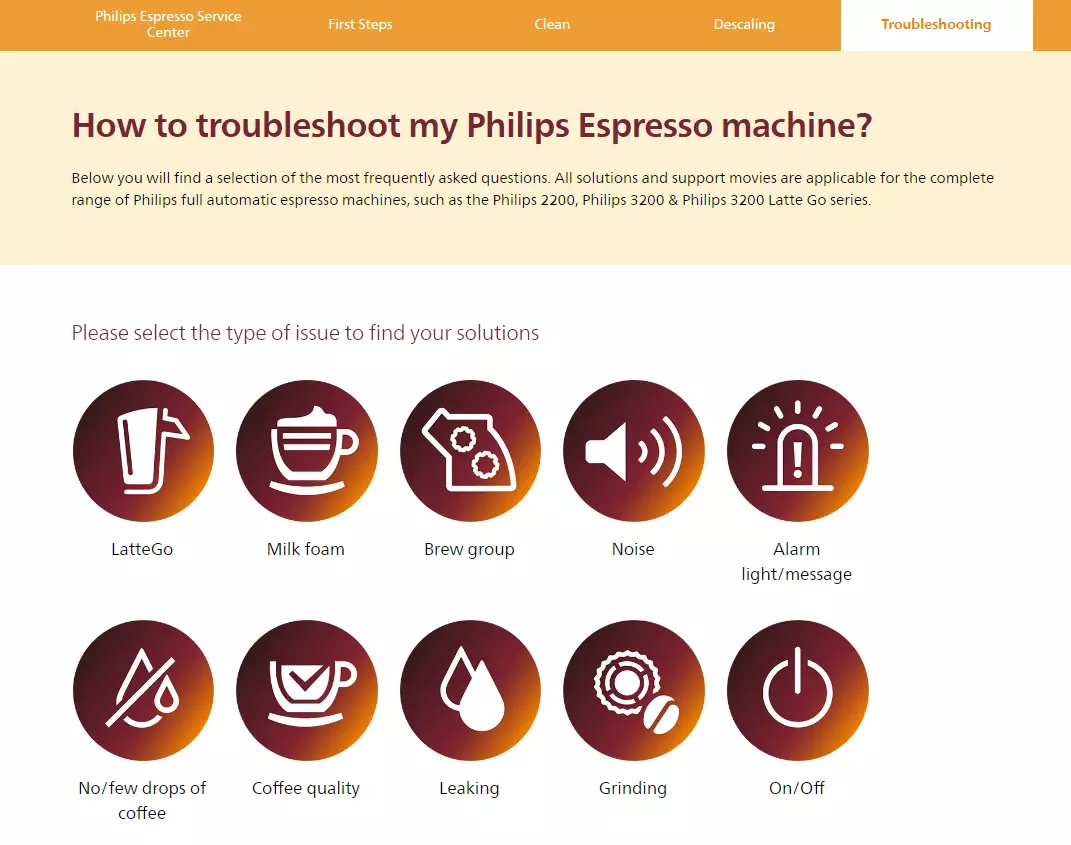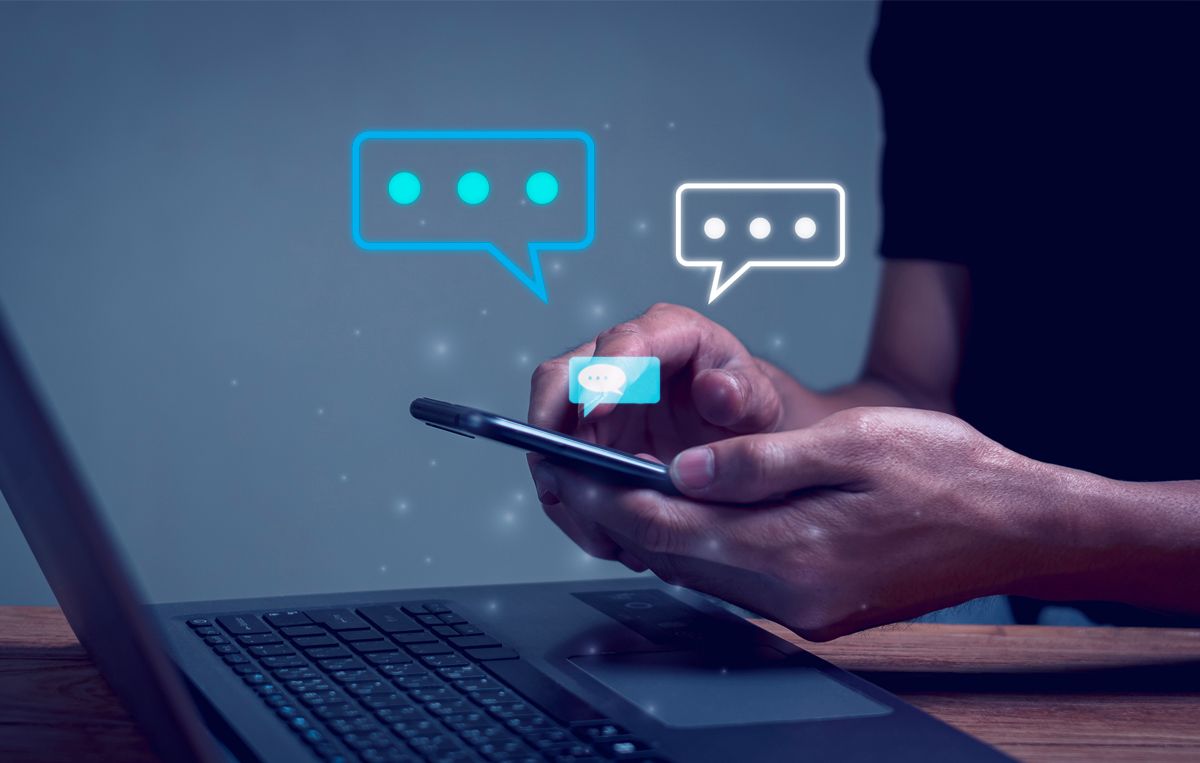With over 3.065 billion people on the platform as of April 2023, the potential for brands using Facebook Messenger for customer service issues is higher than ever.
Understanding how to use Facebook Messenger for customer care is crucial for any B2C brand aiming to provide the best experience.
To make the most of this tool, it’s important to know how Messenger works for businesses and how it can elevate your customer service.
Let’s get right into it.
Benefits of Using Facebook Messenger for Customer Care
There are many benefits to using Facebook Messenger for customer care.
Let’s take a look at some of the top ones.
Reach a Large Audience
With as many as 1.3 billion active users worldwide on Facebook Messenger, you’ll be able to reach a large audience with your customer care experience.
In addition, people tend to check their phones more than they check emails, so you’ll be able to reach your customers quickly and provide high-quality solutions when it matters.
Customer Service on the Go
With Facebook Messenger, you can offer customer service on the go. This means that your customers can get in touch with you no matter where they are.
All they need is an active internet connection.
This is convenient for you and your customers – no more having to search your website for a convenient way to get in touch.
Personalized Experiences
When you use Facebook Messenger for customer care, you can create personalized experiences for your customers.
People will often get in touch with you expressing interest in your product or service, using language that lets you know what obstacles stand in the way of them becoming paying customers.
One of the most effective ways to handle a large volume of customer queries is by using Facebook Messenger Chatbots to automate responses to common questions.
For example, you could create a bot that sends prospective customers educational content when they first get in touch, then asks if they’re ready to book a consultation after they’ve had a chance to learn more.
By creating personalized experiences, you can turn more prospects into paying customers. And with the help of Messenger bots, you can do it all without lifting a finger.
Increased Engagement
Finally, using Facebook Messenger for customer care can help to increase engagement.
Customers who feel they can reach you easily and quickly are more likely to stay engaged with your brand. This can lead to more sales and loyalty in the long run.
Native Customer Care Tools for Facebook Messenger
1. Chat Plugin
The Facebook Chat Plugin allows visitors to start discussions with your company while browsing your website. This plugin can be added to any website and is available for desktop and mobile devices.

How do you add the plugin to your website?
You’ll need to create a Facebook Page for your business and follow the step-by-step instructions to set it up using the Meta Business Suite.
Additionally, you can use Facebook’s API to add the tool directly to your website.
To ensure smooth integration of Messenger with your website, explore how to use Facebook on your website to enhance your customer care experience.
2. Ads That Click Directly to Messenger

With this tool, you can create ads that directly connect you to Messenger so people can start a conversation with your business. These ads are a great way to reach new potential customers and connect with them personally.
When creating this type of ad, you’ll be able to set up both the ad itself and the welcome experience people will go through when they start a conversation with your business.
This allows you to dial in your message and ensure that people have a great experience. With tons of Facebook Ads benefits, this is just one more way that you can use them to connect with potential customers.
3. m.me Links
m.me links allow people to start conversations with your business by clicking on a link. This is a great way to add Messenger to marketing materials, such as email signatures, printed ads, or TV commercials.
Why is this great from a developer’s point of view?
These links allow you to pass different tracking parameters to see how people come across your messenger link.
Here’s all you need to know to create an m.me link redirect.

4. Facebook Page
While not precisely Facebook Messenger, your Facebook Page is still an essential customer care tool since people can use the Messenger feature on your Page to contact your business.
Your Facebook Page also serves as a hub for all your Messenger interactions. This means you can see all the messages you’ve received, even if they were sent through other channels.
Additionally, your Page is where you’ll find all the insights and metrics for your business activity on Facebook, providing a great resource to understand whether your presence on Facebook is heading in the right direction.
By constantly improving your Facebook business page and making it easy for people to contact you and get a suitable response, you can provide a fantastic customer experience that will keep them coming back.
5. Instagram Inbox
What about Instagram when it comes to customer care tools?
As with Facebook Pages, people can contact businesses on Instagram through Messenger. This means you can keep all your customer interactions in one place and see how they perform across all channels.
Plus, with all the new features being added to Instagram, such as live video and disappearing messages, it’s more important than ever to ensure your business is active on this platform.
Using Facebook Messenger and Instagram together can provide a great customer experience that will keep people coming back.
In addition, with its native messaging feature, customers will reach out to you when you create content they love, hate, or have something to say.
You can use it to run ads that get users to take a particular action. This is a great way to reach new potential customers and start conversations with them.
Third-party Tools Customer Care Tools for Facebook Messenger
Apart from the native customer care tools that Facebook offers, there are third-party apps that one can use to provide an even better experience.
Here are some of the top ones.

SocialPilot allows you to use their social media inbox to track easily, respond to, and manage your Facebook messages in one place.
You can provide customer support, sales, and marketing messages through a single tab without switching between different apps using this Facebook Messenger customer care tool.
You can even manage interactions of multiple locations and pages from a single inbox.
As a result, managing your Facebook Business Suite has never been easier.
2. Rignite

Rignite is another social media management tool that makes it easy to care for your customers on Facebook.
You can easily keep track of all your conversations in one place by syncing this tool with multiple social platforms.
You get notified in your activity feed when someone interacts with your brand, allowing you to address their needs as quickly as possible.
3. Live Agent

LiveAgent is a great tool for social media monitoring and customer care.
Storing each mention, comment, and message as a support ticket, you’ll never miss an opportunity to engage with a customer.
This means you can answer more tickets with less effort, making your customer care more efficient.
In addition, you can connect with customers on the various channels where they’re talking about you.
Moreover, you can even make calls from the app with cloud phone support.
Best Practices to Improve Customer Service Through Facebook Tools
Here are some best practices that can help improve customer service when using Facebook-related tools.
1. Be Proactive and Use Problem-Solving Skills
Customer service on Facebook is about being proactive and using problem-solving skills to address customer concerns.
This means you must constantly monitor your channels for any issues that might arise and, where possible, stop them before they even come to fruition.
If you see a problem, don’t wait for the customer to contact you. Address the issue head-on and offer a solution.
For example, as COVID lockdowns were happening all over Australia in 2021, Kitkat partnered with ‘R U OK?,’ a harm prevention charity, to launch a campaign promoting mental health awareness.
Using Facebook to display branded ads that allowed people to click straight to Messenger, the campaign created connections and helped conversations related to mental health.
As a result, Kitkat was able to show its proactive support for a great cause.

Doing something like this will show your customers that you’re always looking out for their best interests and are willing to go the extra mile to solve their problems.
Train your staff to know your product range and be able to make recommendations based on other products that might fit the customer’s needs better.
This also works if a product is out of stock or unavailable – you can use your knowledge to suggest an alternative product that the customer might like.
2. Use Your Website to Provide as Much Information About Your Product/Service
Lastly, feel free to combine the content on your website and Facebook messages to drill down on a particular issue or type of content you want to focus on.
If you have a lot of information about your product or service on your website, use it to your advantage.
For example, suppose a customer needs help understanding how to use a particular feature. In that case, you can direct them to a troubleshooting page on your website, where they can find more detailed instructions.
This will save you time and effort in the long run and also help reduce the number of repeat questions you get.

The Philips Espresso machine troubleshooting page is a good example of a page that provides customers with all the information they need to get to the root of the issue they’re facing.
A company that constantly links to its social media profiles from its website (and vice versa) ensures that customers can find the information they need with the least amount of clicks possible.
In Conclusion
Facebook Messenger customer care tools can save businesses time, effort, and money while enhancing customer satisfaction by providing a more efficient way to communicate with customers. With a variety of tools available, businesses should take the time to evaluate which ones best align with their needs and goals.
If you’re looking for a comprehensive social media management tool that integrates with Facebook Messenger and simplifies customer care, SocialPilot offers an easy-to-use platform. From managing messages to tracking engagement across multiple accounts, SocialPilot helps businesses stay on top of their customer interactions. To learn more about how SocialPilot can support your business, check out our pricing page.


